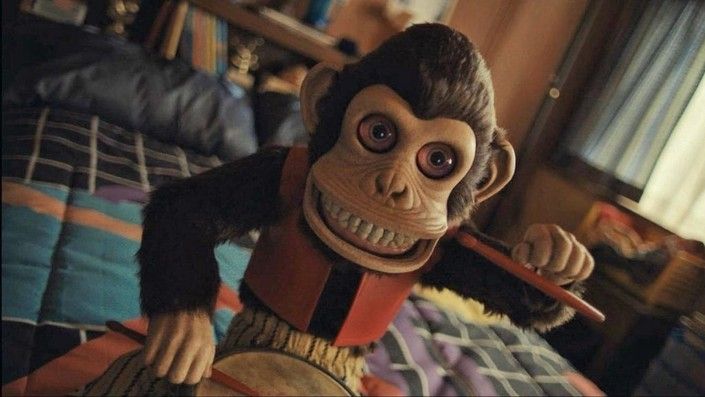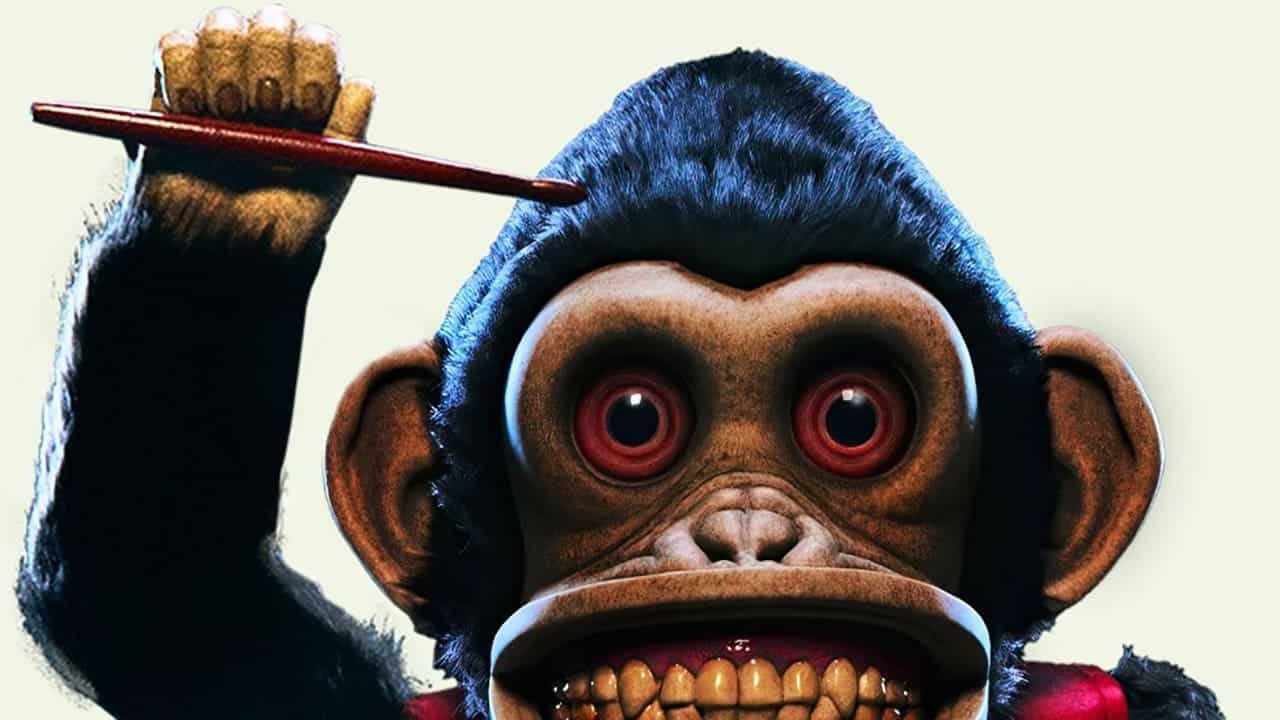Table of Contents
A Post-‘Longlegs’ Challenge
Following his astonishing directorial success with _Longlegs_ just last year, Osgood Perkins was hungry for a new project that would reinforce his credentials as a genuine horror filmmaker. Determined to climb the ranks of the genre’s most admired directors, he set his sights on adapting a Stephen King tale “The Monkey”. From the outset, this choice appeared ideal, as King’s stories have long inspired nightmares on screen. Perkins found himself in a prime position to showcase both fear and dark humor in equal measure, a feat that has become his signature. Nevertheless, while his knack for unsettling visuals remains evident, his efforts to establish a solid emotional foundation in this narrative occasionally waver.
This gap between chilling imagery and deeper character grounding becomes more noticeable as the plot unfolds. In striving to balance authentic scares with comedic touches, Perkins underscores his willingness to experiment, even if the results sometimes feel uneven. The Monkey, based on King’s short story, diverges quite a bit from its source material so that it can span a full feature-length runtime. Perkins endeavors to preserve the core spirit of the original while exploring new directions that expand the tale.

Although King’s influence lingers throughout, the film’s unique tone and style reflect Perkins’ personal vision. By weaving humor into the framework of supernatural horror, he aims to produce an experience that keeps viewers anxious yet slightly amused. Still, some purists may find the script’s added layers at odds with King’s tighter, more straightforward narrative. The extra plot points peppered in to fill the movie’s runtime sometimes accentuate the challenge of stretching a short story to a longer format. Yet, the overall ambition remains impressive, as Perkins attempts to fuse classic terror with modern cinematic elements.
A Pawn Shop Overture
The story commences in a dimly lit pawn shop, where viewers first encounter pilot Petey Shelborn, portrayed by the ever-charismatic Adam Scott. He appears nervous, determined to offload a sinister wind-up monkey toy without offering much explanation. The presence of blood staining his collar foreshadows the violent path the monkey’s history may take. Perkins uses this initial sequence to establish an uneasy atmosphere, coupling flickering overhead lights with Scott’s hushed desperation. In addition, there is minimal dialogue, which in turn increases the tension and makes spectators guess which parts must be filled.
The expression on the Monkey’s face, already present before the opening credits, hints at the series of horrible events yet to come. By the time Petey slinks out of the shop, viewers are already fixated on the unnerving object left behind. This calculated setup paves the way for the broader timeline, which soon catapults the movie into 1999. Once the film jumps to 1999, it revolves around twin brothers Hal and Bill Shelborn, initially portrayed by Christian Convery during their younger years and then by Theo James in the present. Their volatile sibling dynamic is immediately evident, as Bill relentlessly torments a bespectacled Hal while their single mother Lois, played by Tatiana Maslany, remains oblivious to the bullying.
Perkins uses their interactions to spotlight underlying tensions, illustrating the emotional stress these brothers inflict on each other. The environment at home feels claustrophobic, with unresolved issues seeping into daily life. Their father, a pilot who traveled far and wide, left behind a trove of global curiosities that now clutter their living space. Among these objects is the very monkey Petey had tried to discard. When the twins stumble upon the box labeled “like life”—rather than “lifelike”—they treat it as just another strange souvenir.
Creeping Dread
Shortly after Bill and Hal discover the monkey, a sudden, freak accident rattles their world. Hal begins to suspect that the unsettling toy carries a sinister power far beyond its innocuous exterior. Perkins emphasizes a gradual buildup of suspense, allowing each eerie occurrence to strengthen the monkey’s foreboding aura. At first, the idea that this wind-up figure could trigger tragedy seems far-fetched even to Hal, but the film gradually implicates it in malevolent happenings. Perkins also sprinkles fleeting moments of humor to break tension before dragging the audience deeper into the lurking horror. Meanwhile, the family’s uneasy relationships amplify the dread, creating multiple layers of anxiety. By combining a legendary author’s inspiration with the director’s cinematic flair, _The Monkey_ emerges as a visually striking exploration of supernatural terror, sibling rivalry, and comedic undercurrents.
After that drawn-out introduction, _The Monkey_ unexpectedly leaps 25 years into the future, focusing on an adult Hal who has become an absent father to his son Petey (Colin O’Brien). He vividly remembers how he and Bill once disposed of the monkey years earlier, but an unshakable fear nags at him that its curse endures. Consequently, he has decided that creating distance is the safest way to protect Petey from whatever lingering threat might remain. Still, Hal realizes such precautions are not guaranteed to last forever. Suddenly, a relative’s bizarre death forces Hal to reunite with Petey and Bill, leading them all to confront the monkey’s ominous grip one final time.
Lingering Fear
The plot adds many details connected to the brothers’ turbulent history, especially given that their adolescence was marred by abrupt, mysterious deaths. Despite those grim circumstances, the film struggles to generate any real emotional weight. Perkins devotes considerable screen time to young Hal and Bill, locking much of their friction in a juvenile framework. Their antagonism appears so deeply rooted in their childhood that it never matures into a more layered conflict. Instead, it lingers in a fixed state of unresolved tension, leaving little room for the nuanced growth viewers might hope to see. Those early experiences haunt their adult years, but the underlying pain remains largely unexplored.

As adults, Hal and Bill seem stuck in the dynamics established during those earlier episodes. Bill’s wounds lead him into a chronic state of arrested development, which manifests in juvenile behavior that echoes his adolescent bullying. Meanwhile, Hal grapples with his own sense of guilt and responsibility, although the film tends to only hint at these feelings rather than dig into them. The two brothers inhabit a world where the monkey’s sinister influence hangs over everything. However, the personal stakes they share rarely match the eerie mystique that the supernatural menace creates. These unbalanced elements generate a disconnect between the psychological horror of their family history and the tangible fear of the cursed toy.
Forced Emotions
In numerous scenes, emotional beats feel oddly forced, as if the film wants the siblings to have serious moments of vulnerability without ever earning that depth. This heaviness clashes with how Bill and Hal communicate—or, more accurately, fail to communicate—since they seem perpetually incapable of sincere conversation. The result is a relationship that oscillates between tense standoffs and childish taunts, never fully hitting a believable midpoint. Perkins appears to be aiming for a story that merges horror with intimate family drama, but the tonal blending does not always land effectively. Instead, it often underscores just how disconnected Hal and Bill remain from each other, even when confronting life-threatening circumstances that should demand unity.
This tension also surfaces in Theo James’ dual portrayal of the adult twins, though he does not recapture the charisma or wit seen in his past roles, like _Mr. Malcolm’s List_ or _The White Lotus_. While he attempts to convey Bill’s lingering trauma and Hal’s burdened conscience, the script’s tonal inconsistencies undermine his efforts. Moments that could have showcased his range sometimes get sidelined by abrupt mood shifts, preventing the viewer from investing fully in either brother’s plight. The odd combination of horror themes and family friction can be compelling, but it risks flatlining when the performances and script fail to align. Overall, the film’s ambition is clear, yet the uneven execution highlights the challenges of fusing genuine emotional exploration with supernatural terror.
Dramatic Letdown
The Monkey suffers whenever it attempts to dive into heavier emotional beats, yet there remains a notable amount of fun woven into the movie. For all its efforts to craft a compelling story of sibling trauma and dark curses, the film’s dramatic moments feel underdeveloped. Even so, the energy that emerges from the absurdity of death and mischief is undeniably entertaining. The uneven tone becomes clear when the narrative shifts from tension-filled scenes to moments of slapstick lunacy. Despite this imbalance, certain sequences captivate with their offbeat flair, underscoring director Osgood Perkins’ penchant for humor amidst horror. The film wants audiences to invest in weighty conflicts, but it mostly excels when it leans into whimsical terror. While drama doesn’t quite land, there is still something irresistibly playful lurking beneath the more serious facade.
Perkins proudly displays his twisted comedic sensibilities, injecting a morbid liveliness into each death sequence. He delights in poking fun at the outrageous ways in which fate can strike, creating an R-rated Looney Tunes carnival of gruesome outcomes. That same mania sustains most of The Monkey’s best moments, inviting viewers to revel in the film’s audacious approach. Unfortunately, many of the inventive kills were previously spoiled by the trailers, reducing some of their impact. Nonetheless, Perkins ensures that even with prior knowledge, the final execution of these scenes still manages to shock and amuse. This irreverent perspective on mortality may not appeal to everyone, but it sets the movie apart from conventional horror flicks by refusing to take itself too seriously.
Life and Death Levity
The Monkey fully embraces the bizarre and mind-bending ways in which doom shows up, hinting that every grim outcome carries an undercurrent of sardonic laughter. Perkins taps into his own experiences with untimely deaths, shaping a script that treats life-ending events with a shrug of acceptance. The theme emerges most clearly in an especially unfeeling sermon delivered by a “remarkably shitty pastor” at the Shelborns’ first funeral, who offers little comfort beyond the blunt declaration: “It is what it is.” This line neatly encapsulates the movie’s relentless pursuit of weird humor, dismissing existential dread in favor of wry smiles and headshakes. Audiences seeking a film that takes a hardline approach to tragedy might balk at the breezy attitude, but others will find the flippancy refreshingly honest.

Oddly enough, not taking the concept of death too solemnly becomes The Monkey’s biggest strength. The sequences that best embody this mindset are the ones bursting with madness and comedic timing, effectively walking a tightrope between horror and cartoonish fun. By fully committing to this style, the film becomes a vehicle for indulgent thrills that stand out from more self-serious genre entries. When Perkins really pushes the slapstick element, the result is a wickedly delightful collision of terror and offbeat humor. Nevertheless, he occasionally tries to layer in heavier emotional undertones, and these attempts only highlight the discrepancy between the giddy carnage and the forced sentiment. The movie wavers whenever it slows down to explore heartfelt drama, losing the very momentum that drives its wilder scenes.
Slapstick Horror Edge
If The Monkey had maintained the tone of the standout scene in which realtor Barbara (Tess Degenstein) guides Hal through his deceased aunt’s property—only to become prey to the curse—it could have been close to perfect. That moment brilliantly distills everything the film does well, revealing that pure slapstick terror resonates far more strongly than scattered attempts at somber reflection. Perkins shows real mastery when he combines jump scares, dark jokes, and grotesque twists, leaving viewers torn between wincing and laughing. These collisions of genres and sensibilities are where his talent blossoms. When he sets aside any desire for seriousness and allows the monkey to unleash chaotic brutality, The Monkey transforms into a creative tour de force that distinctly bears the director’s signature.



